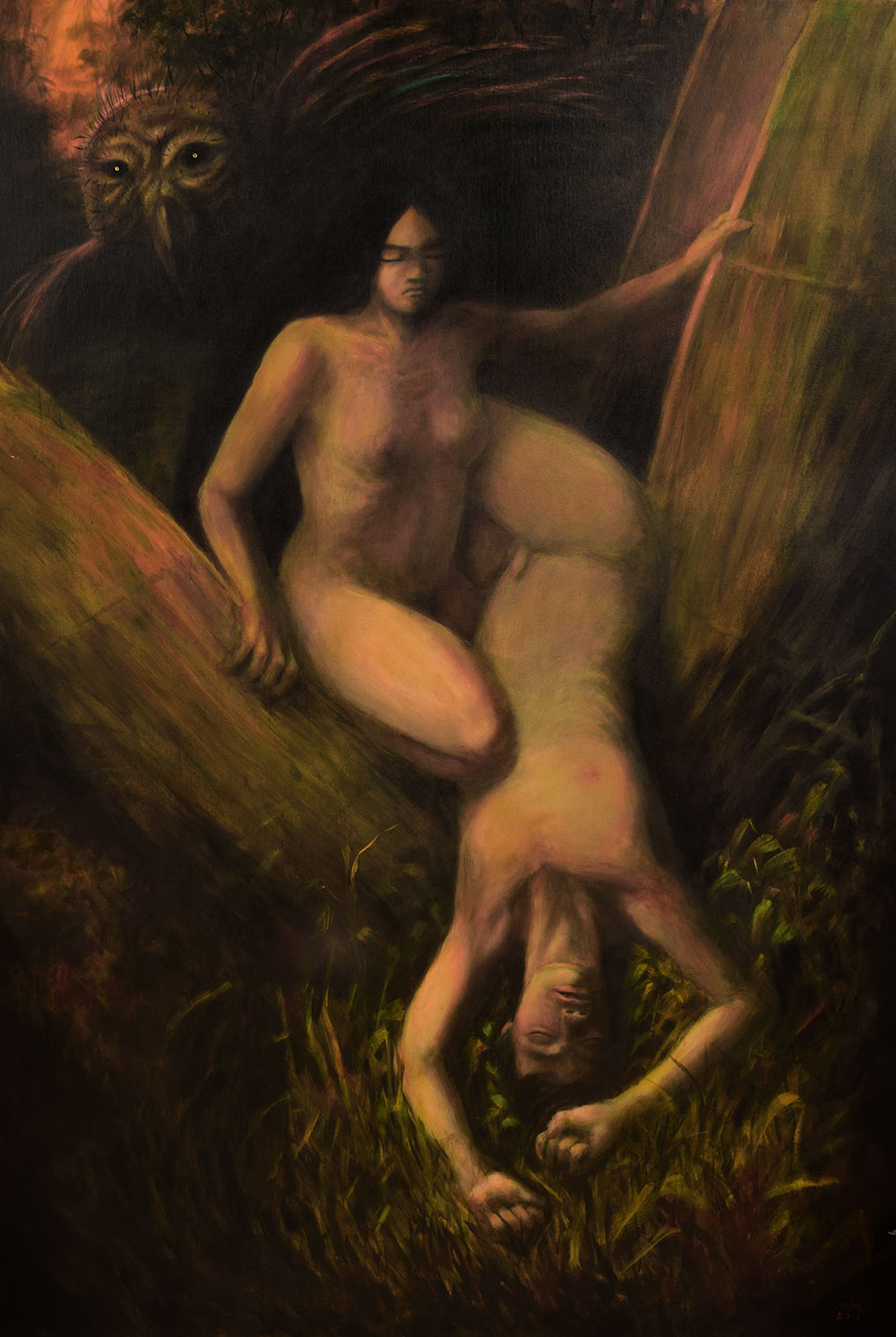Balatkayo
Mervin malonzo
13 OCTOBER - 7 NOVEMBER 2018
Archivo 1984 Gallery presents “Balatkayo”, Mervin Malonzo’s first solo painting exhibit on October 13, 2018, Saturday at 6pm.
Horror comic artist Mervin Malonzo is always fascinated with the twisted and the disfigured. He sees beauty in terror. His visceral paintings evoke a feeling of dread, self-contemplation, and empowerment as the monsters he creates are reflections of who we are as individuals and as a society. He aims to expose the hidden ugly and unappreciated side of humanity uncovering writhing and pulsating bodies that can be both appalling and seductive.
His comics and art are heavily influenced by Philippine folklore and mythology. Both share a single visual language with a few iconic moments from his books appropriated in his paintings, even using his original characters as models.
The exhibit runs until November 7.
Mervin Malonzo graduated magna cum laude and received his bachelor’s degree from the College of Fine Arts at the University of the Philippines, Diliman in 2005. He is known for his National Book Award winning aswang comic-series “Tabi Po” which enjoyed commercial success as a TV series on Cignal TV in 2017. His passion for storytelling and art enables him to manage an indie publishing effort called Haliya Publishing where he collaborates with his wife and fellow writers and artists to produce more books and comics.
In conjunction with Malonzo’s background in comics, the gallery will also showcase a collection exhibition of early works by Larry Alcala and Robert Langenneger, two artists who have extensively explored the field of cartooning in different respects--Alcala, whose work affirms the Filipino’s self deprecating humor in instances of misfortune as seen in his celebrated works: Islaw Palitaw and Tipin to Kalabog and Bosyo and Asiong Aksaya and Robert Langenegger whose work tackles corporeality, history, religious iconography, and carnal desires. Parallel to Malonzo’s imagery, Langenegger’s presents an anarchic backdrop which echos the art historical canon of Goya, the trajectories of American cartoonist Robert Crumb, and the social realist Philip Guston.














